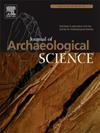Ochres as earth pigments in Hellenistic and Roman polychromy: State of the art and future directions on material origins and trade
IF 2.5
1区 地球科学
Q1 ANTHROPOLOGY
引用次数: 0
Abstract
Ochres are naturally occurring materials that are abundant in various geological environments and geographic regions and that have been used for a range of different purposes throughout history. Their wide use as pigments in ancient art is well-documented and, due to their abundancy, it is often presumed that ochres were extracted from locally available sources. However, ancient literary sources underline a preference for ochres from specific regions and provenance is viewed as a signifier for different properties, uses, and values. Despite the evident importance of ochre provenance for Hellenistic and Roman art, research on the topic remains scarce. This review paper aims to bridge archaeological and literary evidence with science-based methodological approaches that contribute to ochre provenance research. Firstly, an overview of ancient texts discussing terminology and the significance of ochre provenance and trade during the Hellenistic and Roman period is presented. Secondly, archaeological science-based approaches to ochre provenance research are reviewed, sketching out the contribution of interdisciplinary research to ancient ochre research, with a focus on evaluating possible raw material sources. Finally, this paper explores future directions that could contribute to the contextualisation of science-based approaches of ochre-provenance research within the framework of Classical Mediterranean archaeology, a period for which textual and historical evidence complement archaeological finds.
赭石作为希腊和罗马多色的土颜料:材料来源和贸易的技术现状和未来方向
赭石是一种天然存在的材料,在各种地质环境和地理区域中都很丰富,并且在历史上被用于一系列不同的目的。它们在古代艺术中作为颜料的广泛使用是有据可查的,由于它们的丰度,通常认为赭石是从当地可获得的资源中提取的。然而,古代文献资料强调了对来自特定地区和出处的赭石的偏好,赭石被视为不同属性、用途和价值的象征。尽管赭石的来源对希腊和罗马艺术具有明显的重要性,但对这一主题的研究仍然很少。这篇综述论文旨在将考古和文学证据与基于科学的方法方法联系起来,为赭石的来源研究做出贡献。首先,概述了讨论术语的古代文献,以及希腊化和罗马时期赭石来源和贸易的意义。其次,回顾了基于考古科学的赭石物源研究方法,概述了跨学科研究对古代赭石研究的贡献,重点是评估可能的原料来源。最后,本文探讨了未来的发展方向,这些方向可能有助于在古典地中海考古学的框架内对基于科学的赭石来源研究方法进行语境化,这是一个文本和历史证据与考古发现相辅相成的时期。
本文章由计算机程序翻译,如有差异,请以英文原文为准。
求助全文
约1分钟内获得全文
求助全文
来源期刊

Journal of Archaeological Science
地学-地球科学综合
CiteScore
6.10
自引率
7.10%
发文量
112
审稿时长
49 days
期刊介绍:
The Journal of Archaeological Science is aimed at archaeologists and scientists with particular interests in advancing the development and application of scientific techniques and methodologies to all areas of archaeology. This established monthly journal publishes focus articles, original research papers and major review articles, of wide archaeological significance. The journal provides an international forum for archaeologists and scientists from widely different scientific backgrounds who share a common interest in developing and applying scientific methods to inform major debates through improving the quality and reliability of scientific information derived from archaeological research.
 求助内容:
求助内容: 应助结果提醒方式:
应助结果提醒方式:


